Liechtenstein / Fürstentum Liechtenstein – Let’s explore here
What’s it like in Liechtenstein?
Liechtenstein is a beautiful, tiny and very rich, landlocked principality situated between Switzerland and Austria, in central Europe. It is one of only two doubly-landlocked countries in the world, the other being Uzbekistan. Located in the mountains, its highest point is Mount Grauspitz, at 8,527 ft (2,599m) above sea level.
It is Europe’s fourth smallest country, at just over 62 square miles (160 square km) and the population is less than 40,000 (2022), about 6,000 of whom live in the capital, Vaduz. Liechtenstein also has the world’s second highest rate of car ownership, being one of three countries with more vehicles than people, the others being Andorra and San Marino. Although this may be true, we didn’t notice an overabundance.

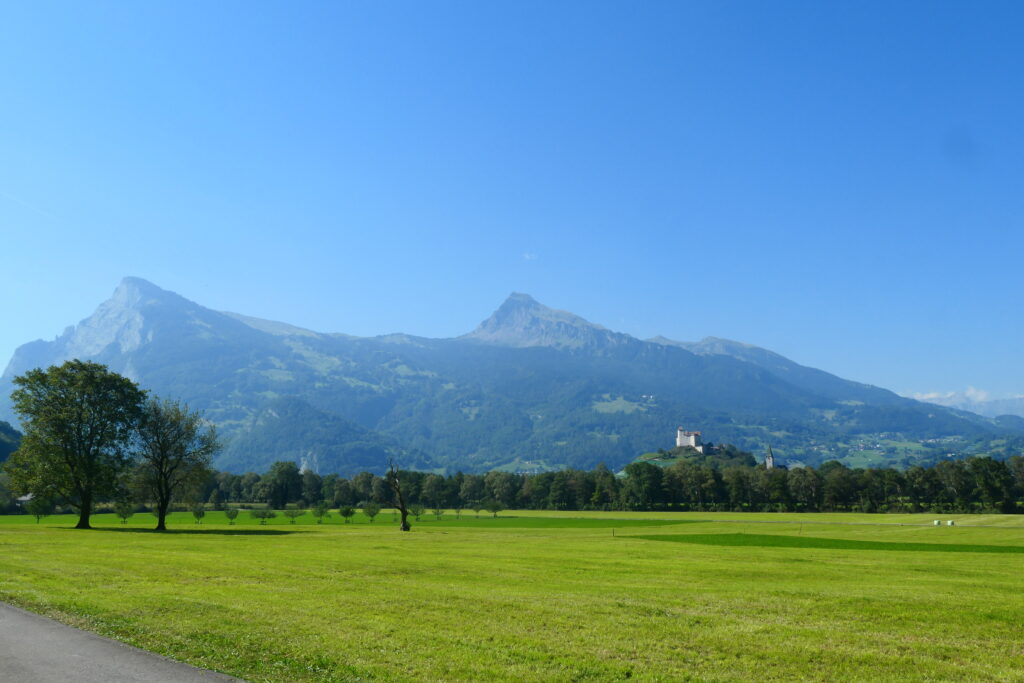
A bit about the history of Liechtenstein
Early History and Foundation
Liechtenstein’s history dates back to the Holy Roman Empire, when the area that is now Liechtenstein was part of the region known as Swabia. The area was gradually consolidated under the control of noble families. In 1719, the region became a principality when the Holy Roman Emperor Charles VI created the principality of Liechtenstein by combining two existing estates, the counties of Vaduz and Schellenberg. The principality was named after the ruling family, the Liechtenstein family, who were already prominent in European aristocracy.
Princely Rule and Neutrality
Liechtenstein remained a relatively small and relatively obscure territory for much of its early history. The country was ruled by the Liechtenstein family, whose influence and wealth primarily came from holdings in Austria and Bohemia. Despite its small size, the principality was recognised as a sovereign state by the Congress of Vienna in 1815, which confirmed its status within the German Confederation.
Throughout the 19th and early 20th centuries, Liechtenstein maintained a policy of neutrality, staying out of conflicts such as the World Wars and focusing on its political and economic stability. The country was, for much of its history, heavily dependent on its larger neighbours, Switzerland and Austria, for economic and military security.
Modernisation and Economic Growth
In the 20th century, Liechtenstein began to modernise its economy. In 1923, the country entered into a customs union with Switzerland, and by 1939, it had adopted the Swiss franc as its currency. Liechtenstein’s economy shifted from agriculture to industry and finance, with a particular focus on banking, which became an important part of its economy due to its favourable tax laws and banking secrecy policies.
Post-World War II and Political Stability
After World War II, Liechtenstein experienced significant economic growth and development. The country remained politically neutral during the Cold War and continued to develop strong ties with Switzerland. In 1989, Liechtenstein became a member of the European Economic Area (EEA), and in 2003, it adopted a new constitution that expanded its democratic framework while maintaining the power of the ruling prince.
21st Century and Continued Neutrality
Today, Liechtenstein is a small but wealthy country known for its strong economy, financial sector, and high standard of living. It is a constitutional monarchy with a parliamentary system. Despite its small size, it is active in international organizations such as the United Nations and has a reputation for political stability and neutrality. Liechtenstein continues to maintain close ties with Switzerland and is regarded as one of the richest countries in the world in terms of GDP per capita.
Having been to Liechtenstein quite a few times when in the Alps, we can definitely recommend it. Although it’s not massively different from its two neighbours, its definitely overly manicured and a little bit prettier!
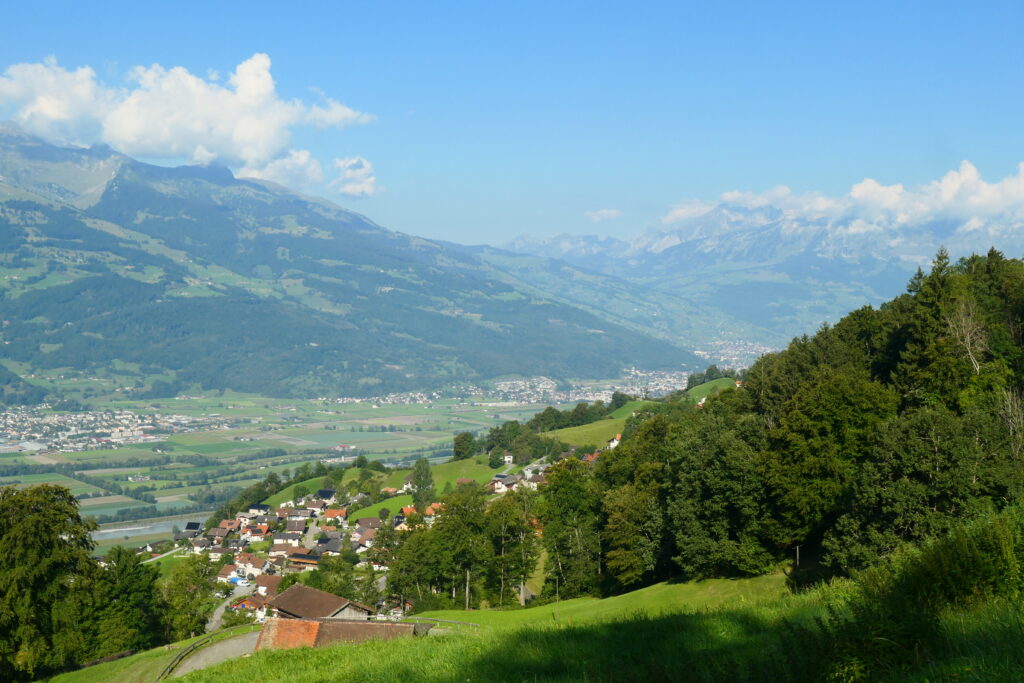

Liechtenstein road trip
We created a blog for our road trip in Liechtenstein. You may find it helpful, and you may pick up some tips, or more likely mistakes not to make that we’ve made 😉 Our road trip was part of a much larger European road trip.
On this road trip we travelled from Switzerland, through to the capital, Vaduz, staying over in Malbun, before moving on to Austria.
Staying over in the county gave us a greater opportunity to chat to some locals and explore what life is like. It also gave is the time to have a really good look around this stunning but small country.
Map of our road trip through Liechtenstein

This is a map of our road trip from Switzerland through Liechtenstein to Austria.
Our route took us from Balzers – Vaduz – Triesenberg – Malbun – Fromahus – Schann – Schaanwald
Our favourite places in Liechtenstein
These are some of the best places that we explored on our road trip through Liechtenstein. We’ve put them in alphabetical order.
Balzers
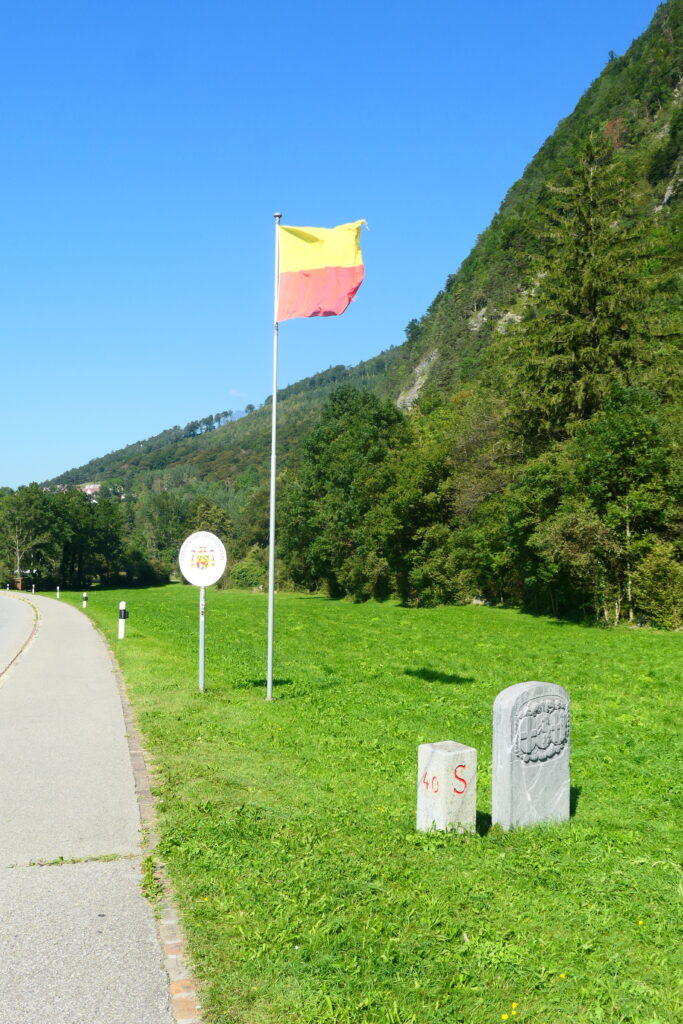
Balzers is a town in the south of Liechtenstein, near the Swiss border, and with a population of around 5,000 people (2023), it is the second-largest settlement in the country. The town’s most notable historical feature is Gutenberg Castle, a fortress and residence of the noble family of Balzers, built around the 12th century. The castle is now a museum which you can visit.
In the 14th century, the area was ruled by the Counts of Werdenberg, and Balzers was integrated into the region’s broader political and economic framework. Over time, it became part of the Principality of Liechtenstein after the country was established in 1719.
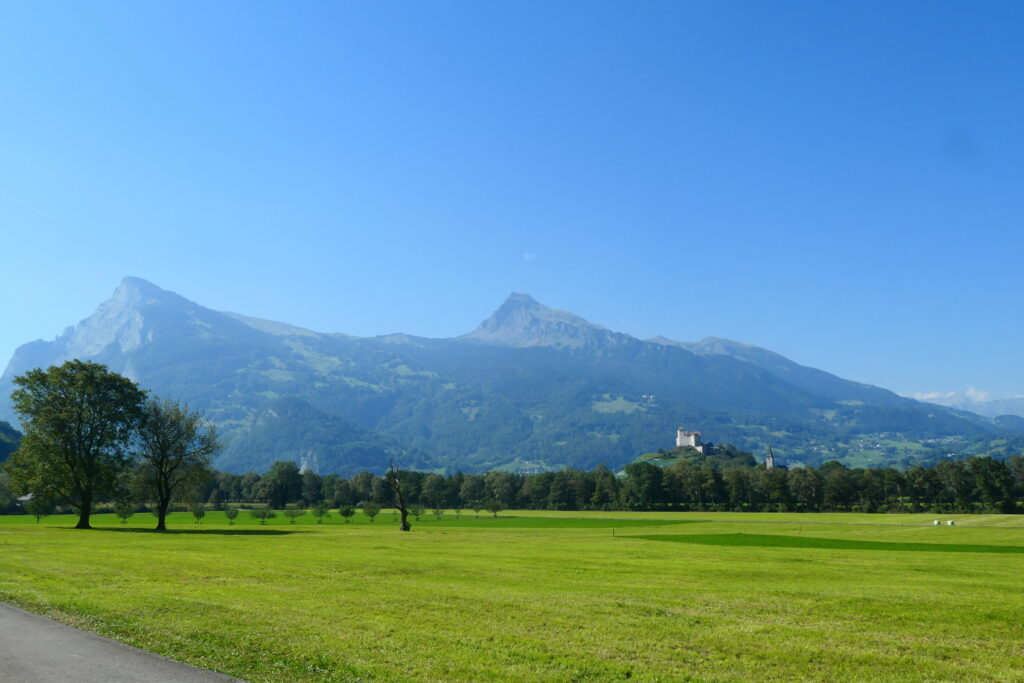
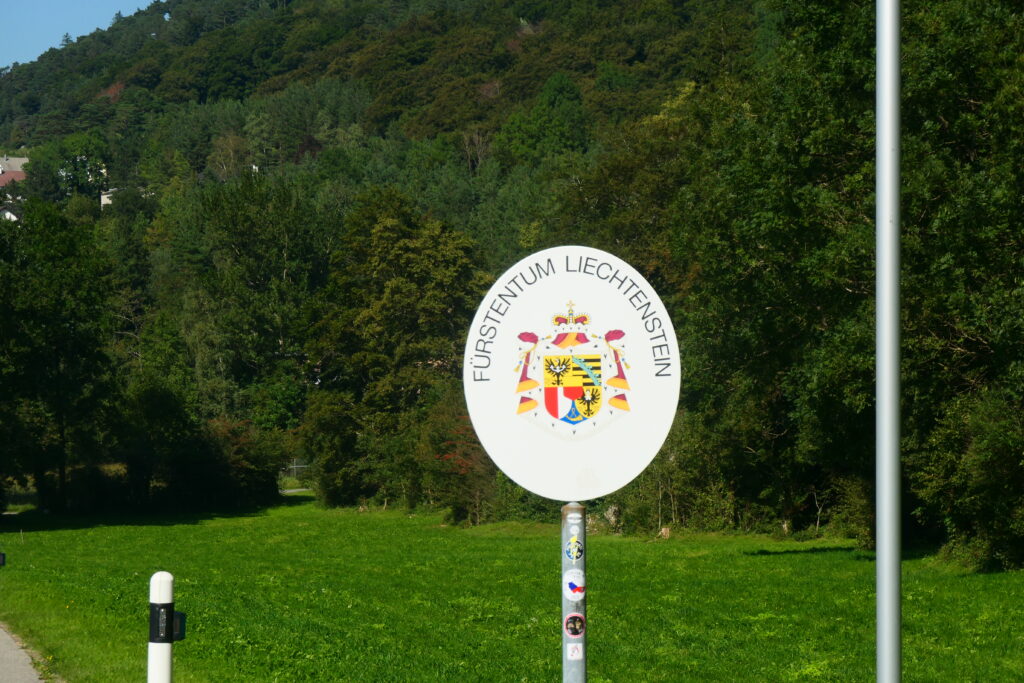
Buacha
Buacha is a tiny village located to the east of, and further up the mountains from, Triesenberg in Liechtenstein. It’s a great place for a stop for a quick break, as it’s not touristy and so you’ll see what it’s like to really live in the country, and additionally it has some awesome views.
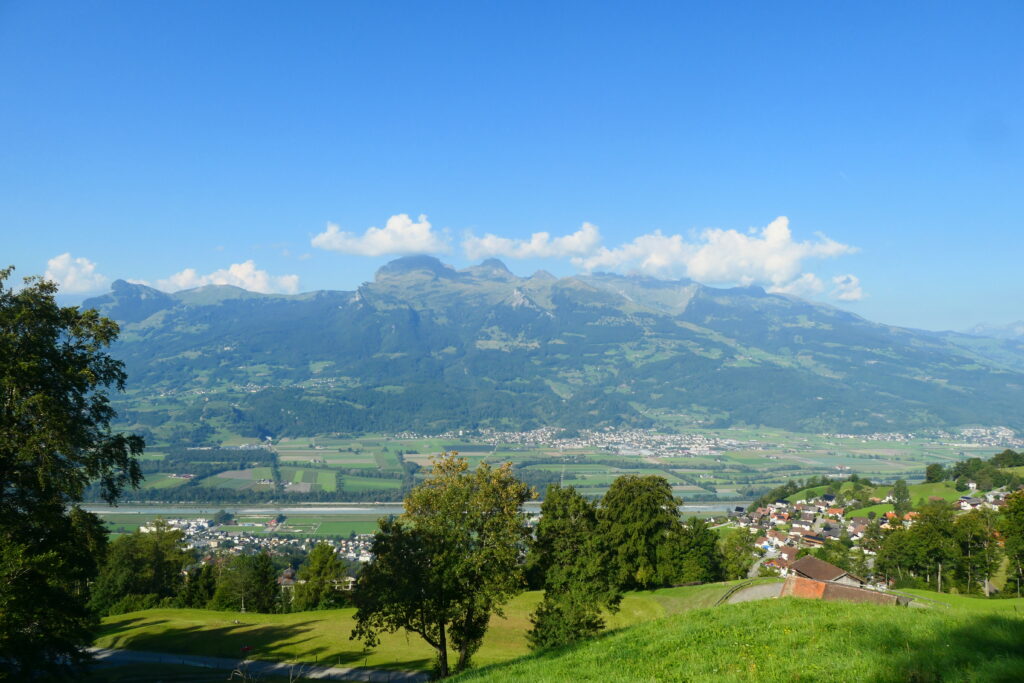
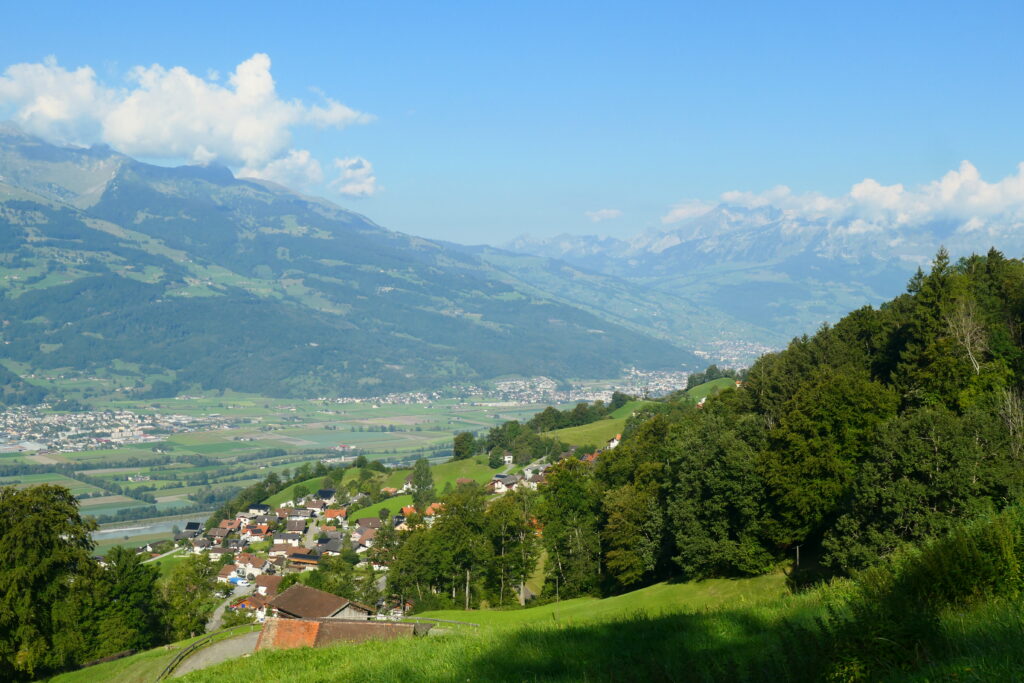
Fromahus
Fromahus is a small village to the north of Triesenberg, located in the municipality of Schaan, Liechtenstein. It is primarily residential and is a very peaceful place that’s not too far from the capital, Vaduz.
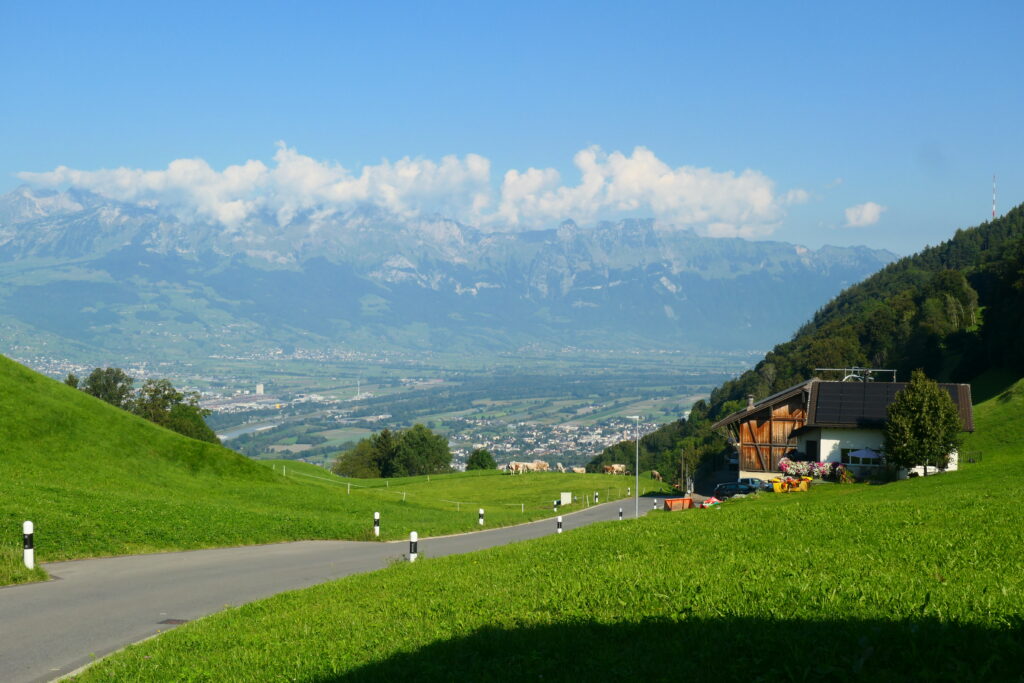
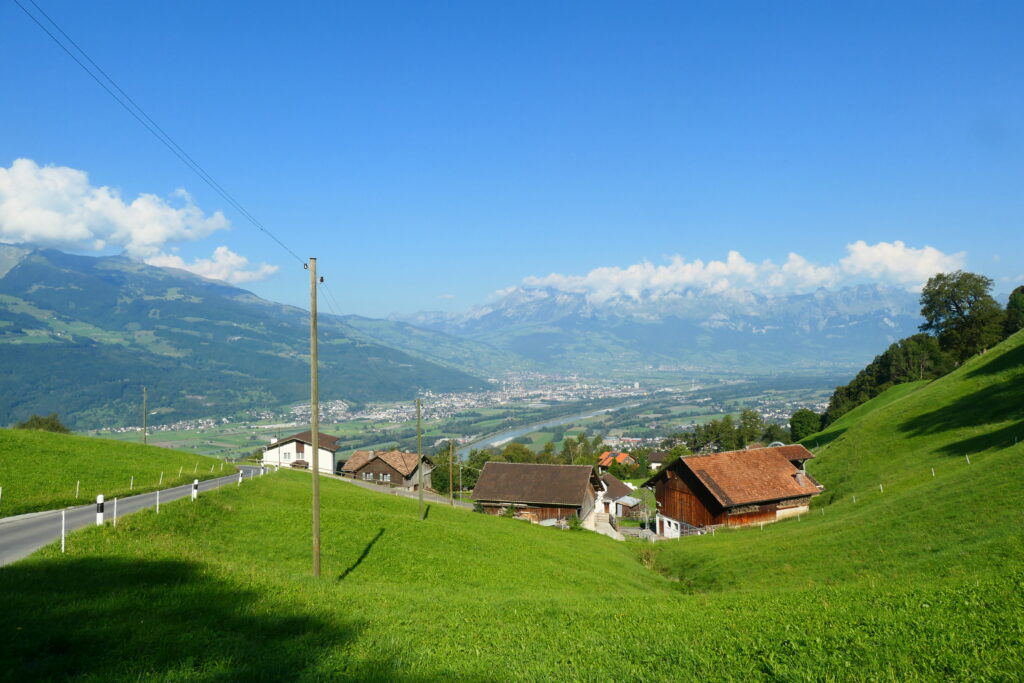
Gnalp
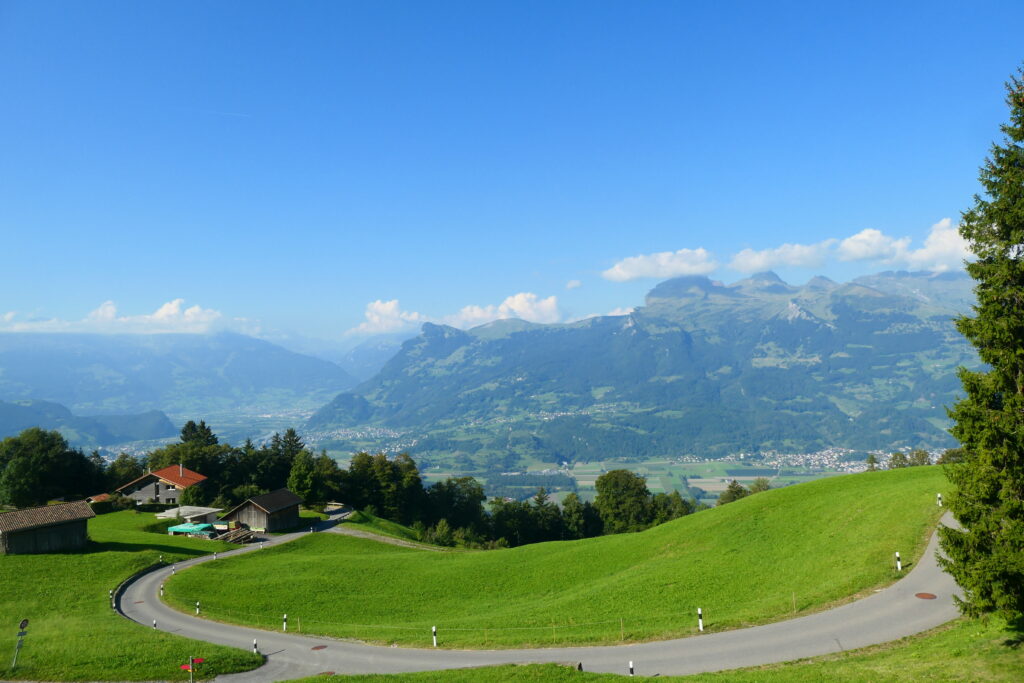
Gnalp is a very small, immaculately manicured, village to the east of Triesenberg. The longest road tunnel in the country starts in Gnalp and runs through to Steg. It’s 2,427 ft (740 m) long and connects Malbun to the rest of Liechtenstein. The tunnel opened in 1947, and connects the Rhine Valley with the Samina Valley at an altitude of around 4,134 ft (1,260 m) above sea level. The maximum clearance height is limited to 12½ ft (3.8 m).
Malbun
Malbun is a picturesque mountain resort village located in the far east of Liechtenstein, at an altitude of approximately 5,250 ft (1,600 m) above sea level. It is the country’s most prominent ski resort and a popular destination for winter sports, particularly skiing and snowboarding. In the summer months, Malbun attracts hikers and nature enthusiasts who explore the surrounding alpine landscapes. Historically, Malbun was a remote mountain settlement, with development as a tourist destination beginning in the mid-20th century.
The village’s population is small, with around 100 residents, as it remains a quiet, resort-oriented community. Despite its size, Malbun is well-equipped with modern facilities, including a cable car system, ski lifts, and a range of restaurants and hotels catering to tourists. We stayed in the Juffa hotel Malbun, which is a really friendly, if quite pricey, place to stay. The food is decent and the views are spectacular!
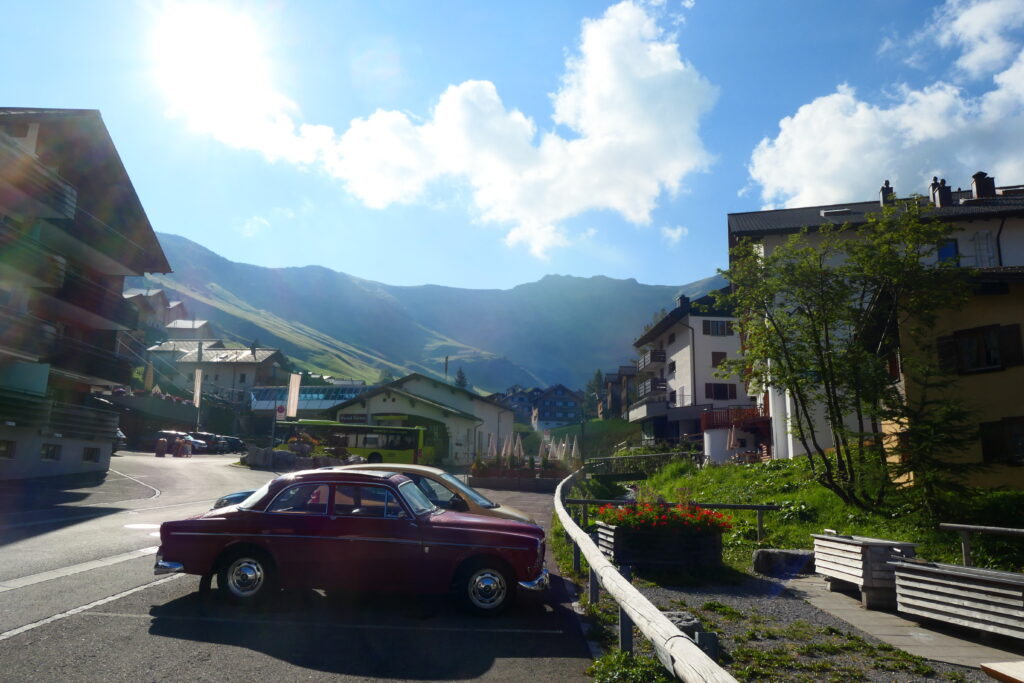
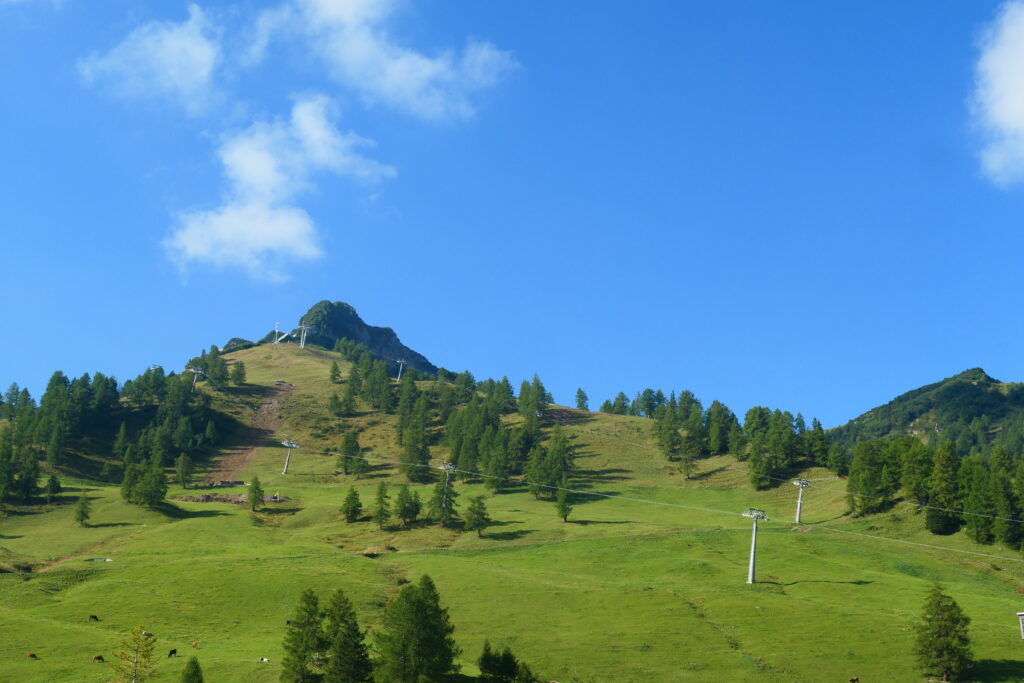
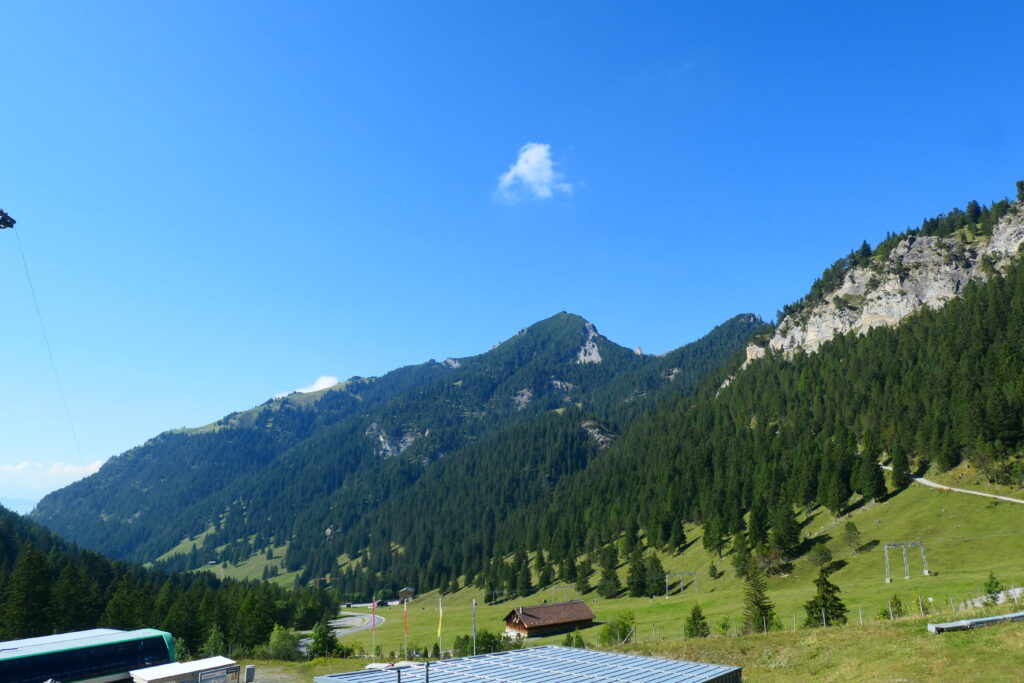
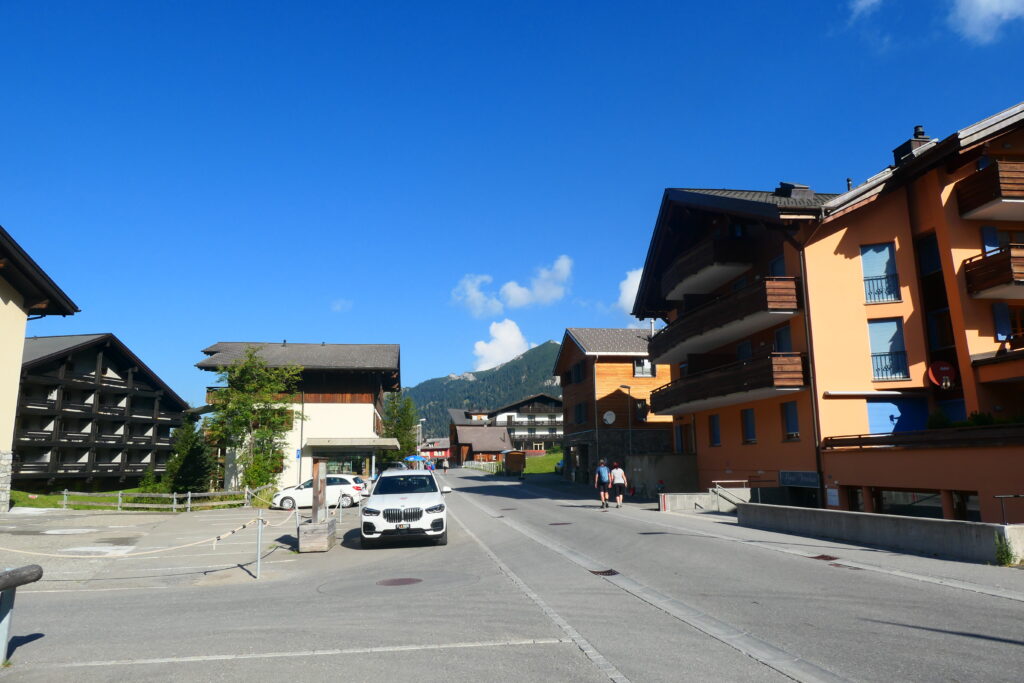
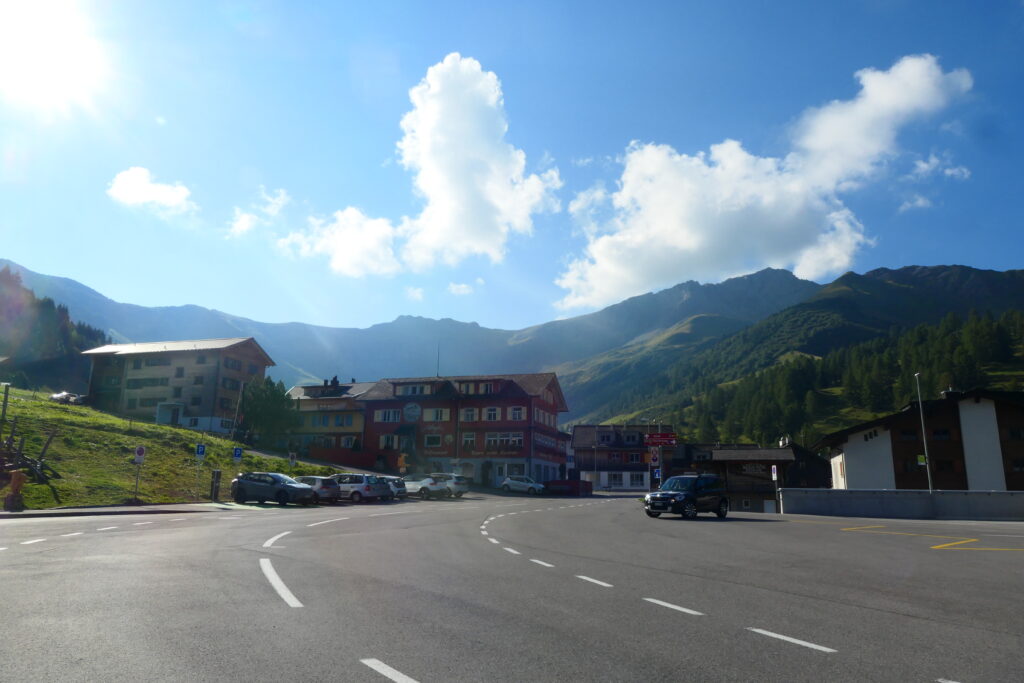
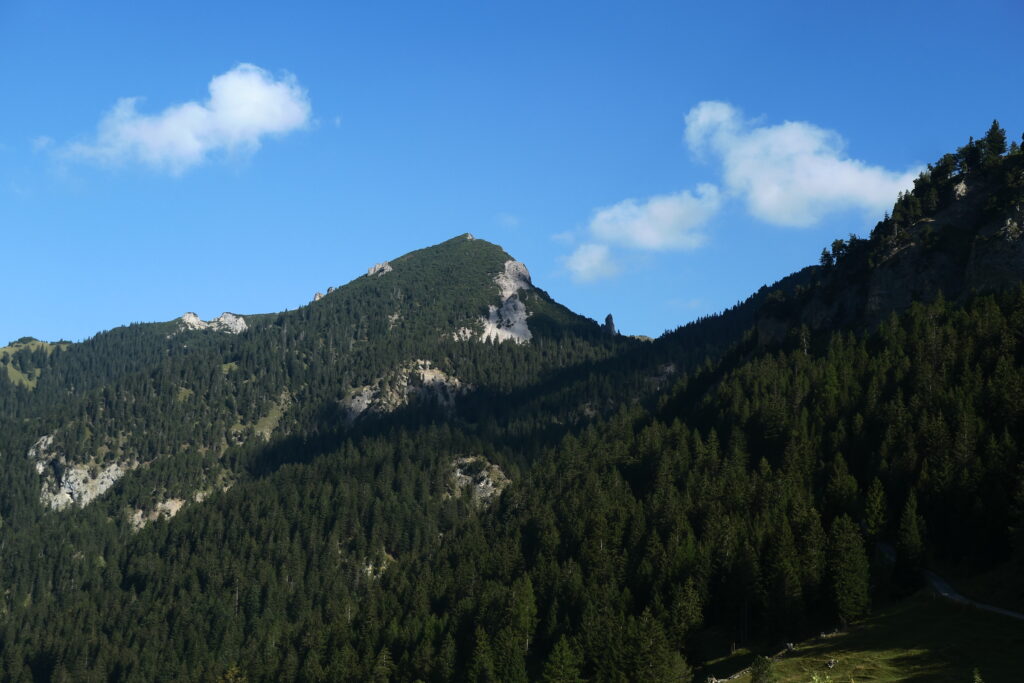
Triesenberg
Triesenberg is a picturesque village located in the mountains of Liechtenstein, at an altitude of approximately 2,950 ft (900 m) above sea level. It is part of the municipality of Triesen and is situated to the south west of the capital, Vaduz, offering stunning views of the surrounding Alps and the Rhine Valley. Historically, Triesenberg has roots that trace back to the 13th century, and the village is particularly known for its traditional wooden houses, reflecting the region’s alpine heritage. Over the years, Triesenberg grew as a farming community and later became an attractive location for tourists seeking a peaceful, mountain retreat.
Today, Triesenberg has a population of around 2,500 residents (2018). Despite its small size, the village offers a variety of services, including local shops, schools, and restaurants. It is also famous for its well-preserved cultural traditions, including the use of the local Alemannic dialect. Triesenberg is also a starting point for numerous hiking trails and provides easy access to nearby attractions, including the ski resort of Malbun.
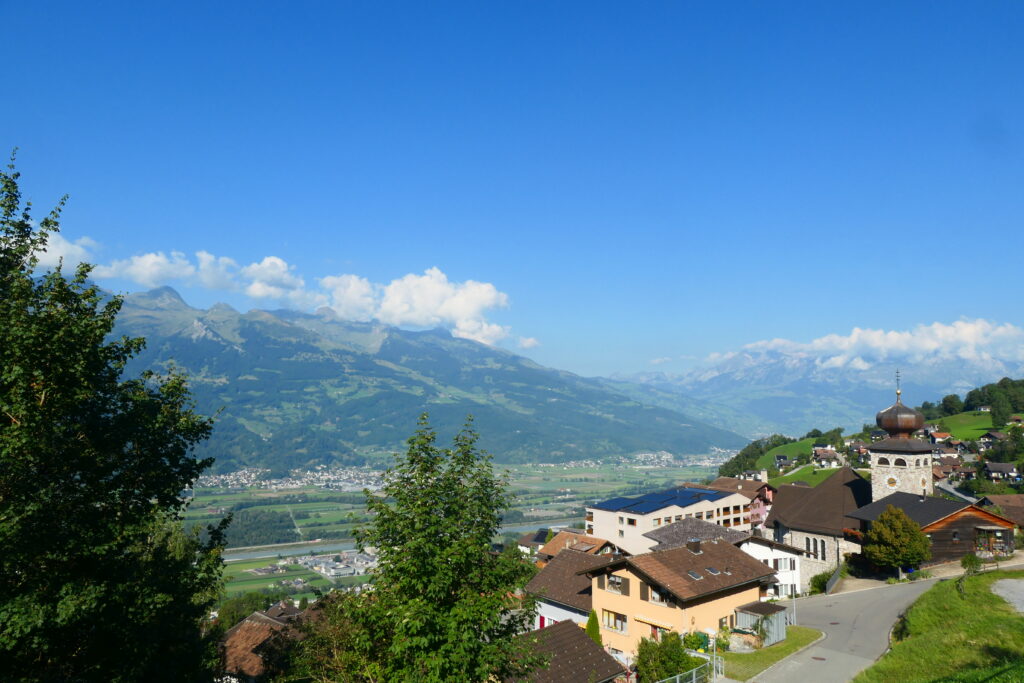
Vaduz
Vaduz is the capital city of Liechtenstein, located along the Rhine River, with a population of approximately 5,900 residents (2023). It’s home to key institutions, including the royal family’s residence, the Vaduz Castle, which dates back to the 12th century. The castle, still owned by the ruling Prince of Liechtenstein, overlooks the city and is one of the country’s most iconic landmarks.
In the Middle Ages, it was part of the County of Vaduz before becoming part of Liechtenstein in 1719. Today, it’s known for cultural attractions like the Liechtenstein National Museum, and its status as a financial center, with numerous international banks and businesses. Despite its small size, Vaduz is a vibrant city that combines rich history with contemporary life.
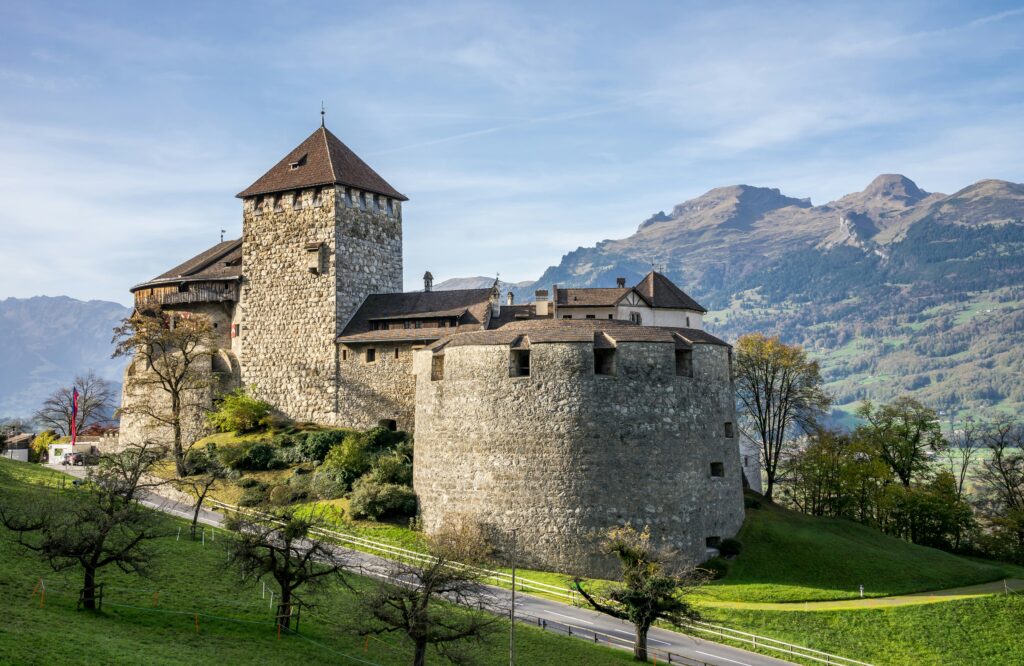
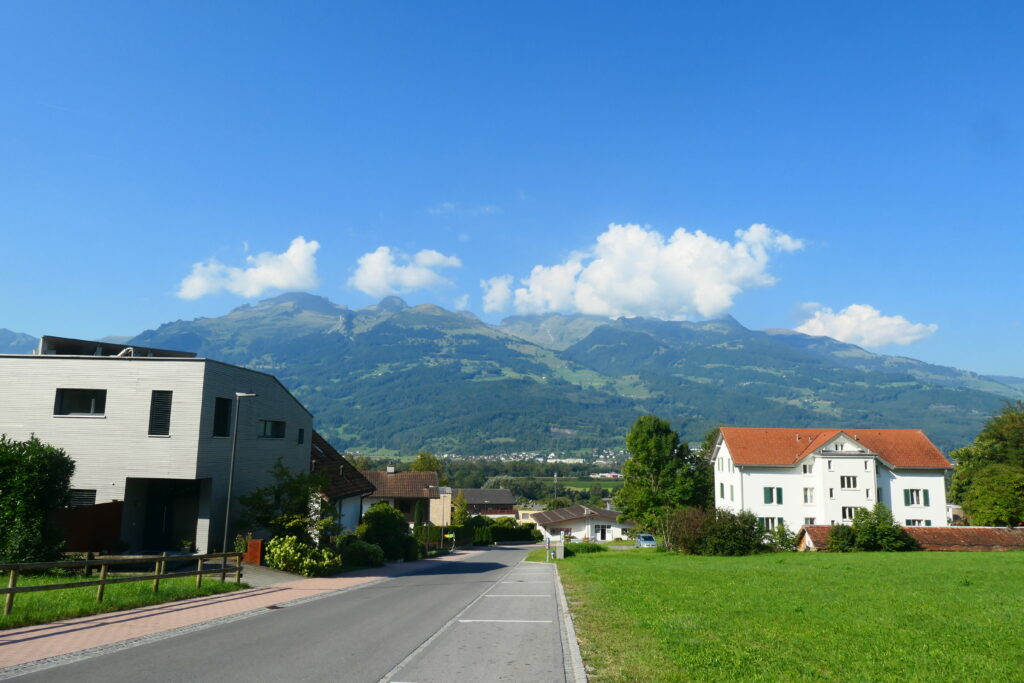
What’s it like to drive in Liechtenstein?
As with almost everywhere on the continent of Europe, they drive on the right hand side of the road in Liechtenstein.
As a teenager I visited Liechtenstein as a passenger on a coach, and the views were spectacular. Sitting on the very back seats meant that every time we went around a hairpin bend, the back end hung over the side of the mountain. It was like being in a perpetual ending from The Italian Job! The second time we visited, we barely registered we were in the country until we saw the exit sign!
To remediate this, this time around we sourced a route that enabled us to see the best of the country. Driving there is mostly a sedentary affair, as many people appear to be sightseeing. The main roads through the country are busy but not overly so – it’s easy to get around. Fuel though is very expensive – you’re better off buying petrol in Austria we found.
Do you require an international driving permit in Liechtenstein?
We’ve created a dedicated page to driving abroad, which answers this question, and more, which you might find helpful.
Can you use your UK driving license when driving through Liechtenstein?
We’ve created a dedicated page to driving abroad, which answers this question, and more, which you might find helpful.
Do I need a carnet de passages to drive in Liechtenstein?
We’ve created a dedicated page to driving abroad, which answers this question, and more, which you might find helpful.
What are the speed limits in Liechtenstein?
The speed limits for cars in Liechtenstein are:
- 30 mph (50 km/h) for urban driving
- 50 mph (80 km/h) outside of built up areas
- 50 mph (80 km/h) on dual carriageways
- 75 mph (120 km/h) on motorways
What currency do they use in Liechtenstein?
In Liechtenstein they use the Swiss Franc. The use of credit / debit cards is now widespread. Travellers cheques are accepted. There are lots of ATMs.
You should make yourself aware of the amount that your bank charges you for using credit and debit cards abroad. Often credit cards are cheaper for purchasing items directly, and for withdrawing cash from ATMs.
What language do they speak in Liechtenstein?
They speak Italian in German, although English is spoken widely in tourist areas.
What time zone is Liechtenstein in?
Remember, when you’re planning your next trip to take a look at what time zone it’s in.
Do I need a visa to visit Liechtenstein?
We’ve created a dedicated, more comprehensive page on visas, which you should find helpful. Check it out!
Is wild camping legal in Liechtenstein?
No, wild camping is illegal in Liechtenstein.
What plug / socket type do they use in Liechtenstein?

In Liechtenstein they use plug / socket type J.
Health issues in Liechtenstein
Is it safe to drink water in Liechtenstein?
Yes, it is safe to drink tap water in Liechtenstein. Bottled water is also readily available across the country.
What vaccinations are required for Liechtenstein?
This NHS website is kept up to date with all relevant information on vaccinations in Liechtenstein.
Phones in Liechtenstein
What is the country calling code for Liechtenstein?
The country calling code for Liechtenstein is +423
What are the emergency phone numbers in Liechtenstein?
- The emergency number for police is: 117
- For an ambulance, the emergency number is: 144
- The emergency number for fire is: 118
If you’ve got some useful info that you’d like to share, let us know!
And don’t forget to check out all the other pictures!
